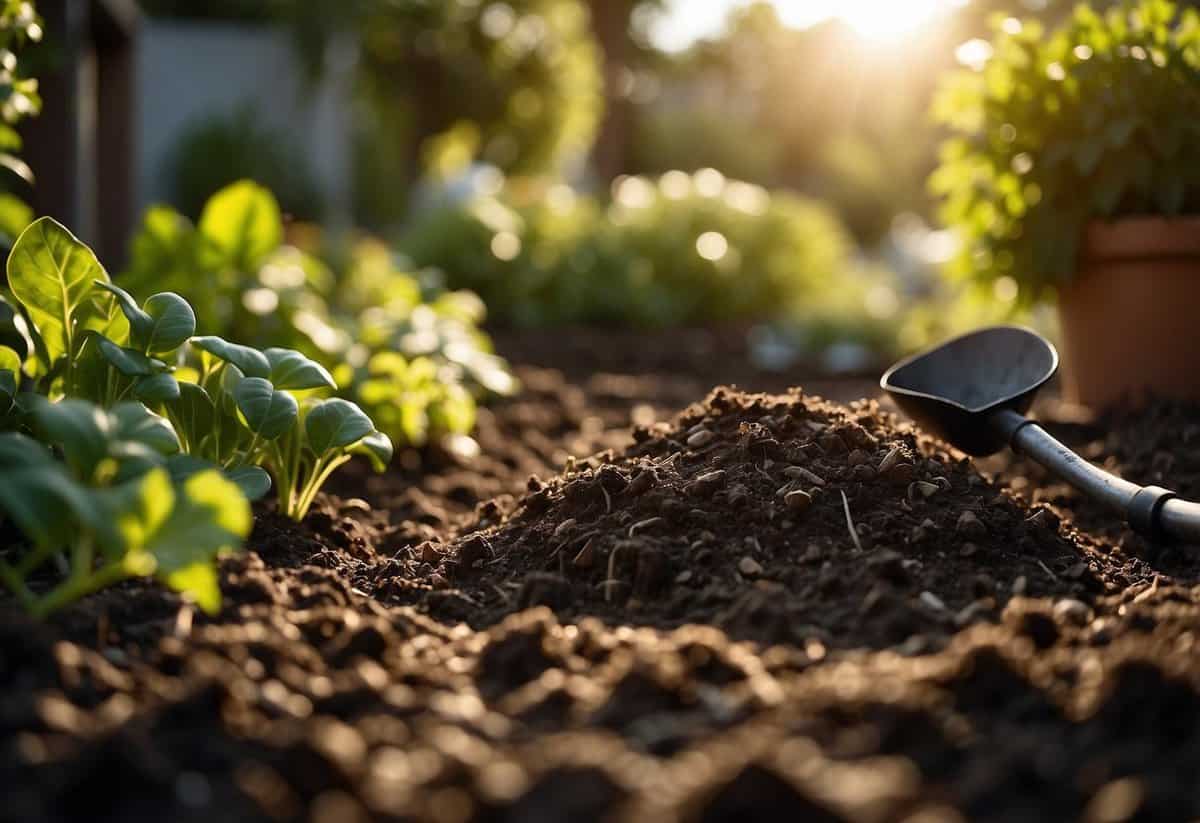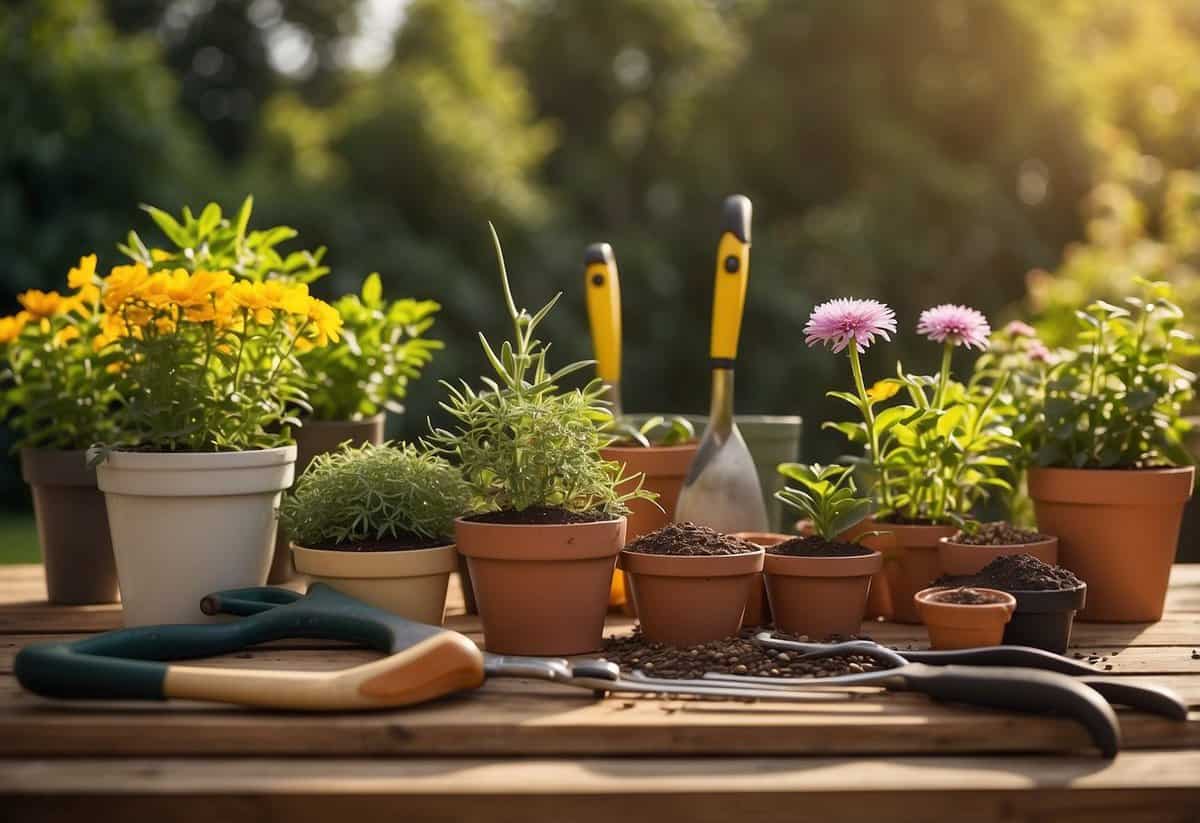Quick Start Garden Tips: Easy Steps for Beginners
Gardening can be a rewarding and enjoyable hobby, whether you’re growing vegetables, flowers, or herbs. What are the quickest and simplest tips to help you get started with your garden? Knowing a few basic tips can make a huge difference in how successful your garden will be.

Starting with easy-to-grow plants and using proper techniques can save you time and effort. With the right guidance, you’ll be able to create a thriving garden that brings you joy and fresh produce.
1) Choose Native Plants

Picking native plants helps your garden thrive with less effort. These plants are used to the local climate and soil, which means they need less water and care.
Native plants also support local wildlife. For example, oak trees can support many insects that feed birds.
Before selecting, check the sunlight and water your garden gets. Match plants to these conditions for the best results.
2) Start with Raised Beds

Raised beds are a great choice for new gardeners. They make it easy to manage your garden. You can control the soil quality and drainage.
Place your raised bed in a sunny location. Vegetables need at least eight hours of sunlight each day. A deck or patio works well.
Keep your beds close together. Without walking paths, you can plant more in a small space. For more details, check out these beginner tips.
3) Use Compost

Compost is a great way to improve your garden soil. You can make it at home with kitchen scraps and yard waste. It’s a natural fertilizer that helps your plants grow strong.
To start composting, you’ll need both “green” and “brown” materials. Green materials include vegetable scraps and grass clippings, while brown materials are things like dry leaves and cardboard. Layer the materials in a bin, keeping the pile moist but not too wet.
Turn the compost regularly to aerate it. This speeds up the decomposition process, turning your scraps into rich, dark compost. When it’s ready, mix it into your garden soil to help your plants thrive. For more detailed tips, check out this guide on how to start composting for beginners.
4) Mulch Regularly

Mulching is essential for a healthy garden. It helps retain moisture, keeps weeds at bay, and adds nutrients to the soil.
When mulching, aim for a layer about 2-4 inches thick. Be sure to keep mulch away from the base of plants and trees to allow for proper air circulation.
Some popular mulch options include bark, straw, and wood chips. Bark is durable, while straw is great for vegetable gardens. Wood chips work well around trees.
5) Plan Your Layout

Start by deciding if you want a traditional in-ground bed or a raised bed. A 4′ x 4′ raised bed is ideal for beginners.
Consider the sun’s path and plant taller crops like corn on the northern side. This prevents them from shading shorter plants.
Visit local gardens to see layout ideas that work well in your area. Matching the local plants and design can help your garden thrive.
6) Rotate Crops Annually

Rotating your crops each year is key to a healthy garden. By changing where you plant each type of vegetable, you can avoid diseases that stick around in the soil.
Different plants use different nutrients. Rotating crops helps balance soil nutrients. This keeps your plants strong and productive.
Planning your garden with a crop rotation strategy ensures you get the best results season after season. Learn more about the benefits of rotating crops here.
7) Use Rainwater

Using rainwater in your garden is a great way to save resources and ensure your plants get pure, natural hydration. You can set up a simple system with barrels to collect rainwater from your roof.
Place the barrels under downspouts to catch the runoff. This collected water is excellent for your garden but should not be used for drinking.
Maximize your garden’s health by using rainwater, which is free of chemicals found in tap water. This method supports sustainable gardening and helps conserve water, especially during dry seasons. Learn more tips on collecting rainwater.
8) Attract Pollinators

You can make your garden a lively place with colorful flowers. Grow tubular flowers to attract hummingbirds. Clusters of small blooms will bring in butterflies. Plant yellow flowers to draw bees.
Keep parts of your lawn unmowed. It creates a habitat for pollinators and other insects. Use a hand mower for the rest.
Choose fragrant flowers. Scent attracts bees and butterflies. Different pollinators prefer different flower shapes and colors. High pollen and nectar plants are best.
For more tips, visit Epic Gardening, Old Farmer’s Almanac, and Wayside Gardens.
9) Choose Disease-Resistant Varieties

Picking disease-resistant plants can save you a lot of trouble. Plants like the Kousa dogwood fight off common problems like anthracnose and powdery mildew.
Largeleaf phlox is another strong choice. It laughs in the face of powdery mildew and thrives in sunlit areas.
Consider Sarah Bernhardt peony for a beautiful, hardy addition to your garden that resists diseases naturally. Happy gardening!
10) Prune Your Plants

Pruning your plants is essential for keeping them healthy and looking good. Trim back excess branches or runners to help your plants focus on flowering and fruiting. Regular pruning also helps control the size and shape of your plants, making sure they don’t get too big for your garden space.
For some plants, there’s a specific time to prune. For example, prune lilacs and forsythias by removing one-third of the branches each year. This technique, known as renewal pruning, keeps them young and vibrant.
Always use clean tools when pruning to avoid spreading diseases. Cleaning sap and debris from your pruning saw can help maintain its effectiveness.
Preparing Your Garden

To start a successful garden, you need to choose a good location and prepare the soil properly. Bright sunlight and well-prepared soil are key to growing healthy plants.
Choosing the Right Location
Your garden needs at least six to eight hours of direct sunlight each day. Find a spot in your yard that offers this amount of sunlight. Without enough sunlight, plants will not grow well.
Make sure the location is close to a water source. This will make it easier for you to keep the plants hydrated. Hauling water long distances can become tiring, especially during hot weather.
Ease of access is also important. You will need to reach your garden to weed, plant, and harvest. If it’s hidden behind obstacles, you might neglect it.
Soil Preparation Tips
Start by clearing out grass and weeds from your garden area. One method is solarization. Lay a clear plastic tarp over mowed, wet grass. The sun will scorch the grass away in about four weeks. Then, dig up the dead grass.
Next, add a layer of compost or a mix of potting soil and topsoil. Spread about three inches on top of the cleared area. This compost will improve soil quality and provide nutrients for your plants.
Water the soil well and allow it to settle. If you start in the fall, by spring, the compost and soil will be rich and ready for planting. Proper soil preparation sets the foundation for a healthy garden.
Planting Essentials

Getting your garden started requires careful attention to choosing the right plants and ensuring they get proper watering. These two elements are crucial for a successful harvest.
Selecting Seeds and Seedlings
Choosing the right seeds and seedlings is essential. Start with easy-to-grow vegetables like lettuce, radishes, and green beans. These can be directly sown into the soil and are known to be beginner-friendly.
For plants that need a bit more care, such as tomatoes and peppers, it’s better to start with seedlings. You can find these at your local garden center. Make sure they look healthy and free from pests.
Consider the following tips:
- Seed packets: Pay attention to the planting dates and care instructions.
- Seedlings: Look for strong stems and vibrant leaves.
- Space: Ensure you have enough room for each plant to grow fully.
Watering Guidelines
Watering is a key factor in maintaining a healthy garden. Most vegetables need about 1 inch of water per week. This can come from rainfall or your hose. It’s best to water in the morning to allow leaves to dry out during the day, which helps prevent disease.
Follow these guidelines:
- Consistency: Keep the soil consistently moist but not waterlogged.
- Method: Use a soaker hose or drip irrigation for even coverage.
- Frequency: Adjust based on weather; hot, dry days may require more frequent watering.
Avoid overwatering, as it can lead to root rot. Likewise, too little water will cause plants to wilt. Observe your plants closely and adjust as needed.







